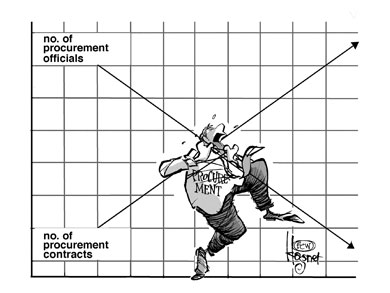Editorial: Help acquisition workers

The next administration could save money in the long run by adding procurement executives.
Government management and performance became issues in the presidential race once again this month. Republican candidate and former New York Mayor Rudy Giuliani said that, as president, he would plan to replace “just half of the estimated 42 percent of federal employees expected to retire by 2017.”
His comment obscures obvious questions: How is the work going to get done? And what programs are going to be cut?
Giuliani’s speech also gives us an opportunity to offer the second in our series of thoughts about issues the presidential candidates should address.
A new administration could almost immediately have a positive effect on government operations by increasing the procurement workforce. Just about everybody who has examined that issue believes the worker shortage is close to becoming a crisis.
A recent report by the Acquisition Advisory Panel states that there are “fewer acquisition professionals in the government to award and administer contracts as the government’s contracting workforce has reduced in size over the last decade. The federal acquisition workforce has declined by nearly 50 percent. …There is an acute shortage of federal procurement professionals with between five and 15 years of experience. This shortage will become more pronounced in the near term because roughly half of the current workforce is eligible to retire in the next four years.”
Meanwhile, the number and size of contracts have increased enormously as that workforce has shrunk. According to data from Mitre, the contract dollars the government has obligated increased from $200 billion in the early 1990s to about $377 billion in 2006.
But beyond that, the acquisition workforce faces issues that are more complex than those it confronted in the past.
Congress and others’ approach to solving the crisis has been to increase oversight. But a better way to improve government results — and decrease the need for greater oversight — would be to increase the number of procurement executives during the next administration.
This would cost money in the short term, but it would save enormous amounts of money in the long run.
Issue two: Procurement workforce

Issue two: Procurement workforce

NEXT STORY: New government marketing group


